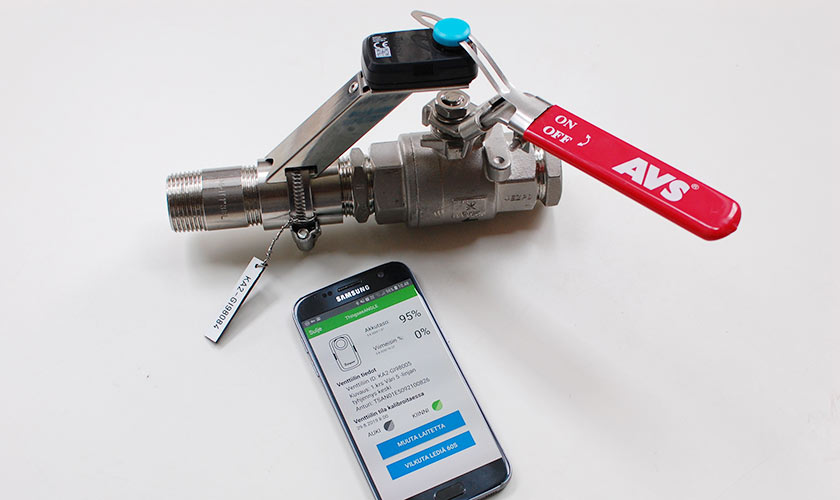At Stora Enso, we have long been able to gather data generated from the production lines where we produce our renewable materials and products. This means that we have been able to apply analytics to improve our operations for years. The emergence of Internet of Things (IoT) was therefore not revolutionary for us but could be seen as a splendid opportunity to acquire additional data in areas outside of the production lines and process manufacturing. For example, IoT sensors would allow us to gather data from maintenance processes and logistics, as well as in monitoring equipment and building conditions – data which would previously not have been possible to get. We have also developed our own sustainable ECO RFID Tag Technology to capture and utilize data in an environmentally conscious way.
In this blog, I would like to focus on one specific example of where we have implemented and are now using IoT – namely the hand-valve IoT sensors in our production facilities. Hand-valves exist all around our mills. Wherever there are pipelines with liquids floating through, there are hand-valves. During maintenance work, the hand-valves are manually turned to let the liquids pass in and out of the pipelines.
As we are constantly looking to improve safety, stability and visibility of quality factors, we identified that the manual hand-valves were somewhat of a “blind spot” for us. We did not have a good way to monitor the physical positioning and status of the valves, which could potentially lead to a waste of fluids, safety issues and quality problems in our products. So, in late 2018 we started a project to evaluate whether IoT sensors could solve this problem for us.
The traditional method of approaching this challenge would have been to replace the manual hand valves with automatic valves, utilising cabling to connect them to the mill control systems. However, this was way too expensive to be a realistic option. Instead, we decided to try a novel idea of mounting wireless sensors on the existing hand valves. With support from Stora Enso’s company-wide funding mechanism, the Digitalisation Fund, we were able to start the project and search for a suitable vendor for the sensors.
It turned out that the wireless solution we were looking for did not exist on the market. Thus, we decided to partner with a vendor specialised in IoT and wireless solutions to start the co-creation of a customized solution. In addition to the sensors being wireless, other important requirements from our side included: durability to withstand tough production environments, adaptivity to several types of valves, and the solution fitting to our data architecture and cyber safety requirements.
As always when creating something new, it is good to take small steps. Therefore, we started out by just testing the wireless technology, after which we initiated a small proof of concept resulting in a prototype. Now, with a recent successful pilot implementation in Stora Enso’s Imatra Mill behind us, we are able to collect data from hundreds of sensors, which is then wirelessly sent to the mill control system. In the control system, the production personnel have a complete overview of the open vs. closed status of the valves, as well as their location in the mill’s piping system.
This specific case has been a great showcase of how innovation and collaboration work in sync. The next step will now be to scale the solution to other Stora Enso mills. In parallel, we are working with other IoT solutions, for example to track the location and condition of equipment in our mills. The efficiency and safety gains are significant from instantly knowing where to find certain items, as well as to predict when equipment needs to be reviewed based on temperature, strain, vibrations, etc. As Stora Enso is also providing materials for the building industry, another IoT use-case involves utilising sensors on wooden elements in buildings to monitor for example moisture conditions and propose accurate maintenance actions to our customers.
We now have more data at our disposal than ever before, whether it is gathered by the production processes or via IoT sensors, and we see the need for both to ensure data accessibility across the company, as well as enhancing cyber safety. This is also why we have established a cloud data architecture together with security solutions and policies, and why a requirement when working with external partners is that we own the data in our own cloud.
In summary, I would say that data is nothing new for Stora Enso, but it is increasingly becoming one of the most valuable assets to continue a safe and efficient journey towards delivering renewable products and solutions for our customers in the future. Through our digitalisation programme we aim to explore the possibilities further and to make the most of them.







